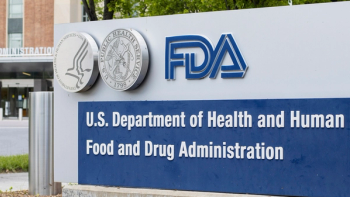
Reducing the Risk of Blood Clots in Patients With Multiple Myeloma
Newer treatments for multiple myeloma come with an increased risk for thrombosis, but researchers discovered five factors that could help prevent the side effect.
Patients with multiple myeloma are at risk of developing thrombosis (blood clots) that are associated with some newer treatments, according to two myeloma experts.
Therefore, researchers from Fred Hutchinson Cancer Research Center, the University of Washington and Seattle Cancer Alliance, examined if they could identify risk factors for patients to determine who would most likely benefit from blood thinners. Their findings were published in the Journal of the National Comprehensive Cancer Network.
“(Thrombosis) is considered very high-risk especially when patients receive immunomodulatory drugs,” Dr. Ang Li, a medical oncologist at the University of Washington, said in an interview with CURE®. “From other national studies, we know that these patients tend to have a higher risk for developing blood clots. But it is harder in this population with how you figure out who should or shouldn’t receive a potentially preventive treatment.”
The researchers identified more than 3,600 patients using the SEER-Medicare database and a Veterans Health Administration database. All patients were prescribed immunomodulatory drugs, such as
They discovered five factors to be associated with the likelihood of a blood clot: a prior history of blood clots, surgery within 90 days, being 80 years of age or older, high steroid dose and non-Asian race. Each factor was assigned a different point value — history of blood clots ranked highest.
In the Medicare group, patients with a score of 2 or higher experienced blood clots at three and six months at a rate of 7% and 12%, respectively. In those who had a score of 1 or lower, blood clots were seen at a rate of 4% and 7% in that same time frame. The results were similar for the Veterans Health Administration group, the researchers wrote.
Although there is no definitive reason for the increased risk of blood clots when using immunomodulatory medications, Li noted that there is an interaction between some of those drugs and dexamethasone, a high-dose steroid, which is used in patients with
Upon making decisions on treatment, patients can ask their health care team questions: “In addition to efficacy, can you clarify any side effects that are associated with the treatment? How likely are they to occur?”
It’s important for patients to be their own best advocate, said Dr. Kristen M. Sanfilippo, an assistant professor at Washington University and Siteman Cancer Center in St. Louis and senior author on the study. “We know in multiple populations that thrombosis leads to increased risk of poor patient outcome, discomfort, functional decline and death.”
But through recommendations, such as the ones studied, health care providers may be able to potentially prevent this side effect from occurring.
“The current therapy for myeloma in general has continued to improve and is continuing to improve immensely in the past decade,” said Sanfilippo. “A big focus of what we are doing is to try to decrease the risk of the side effects from these excellent therapies that we have.”





